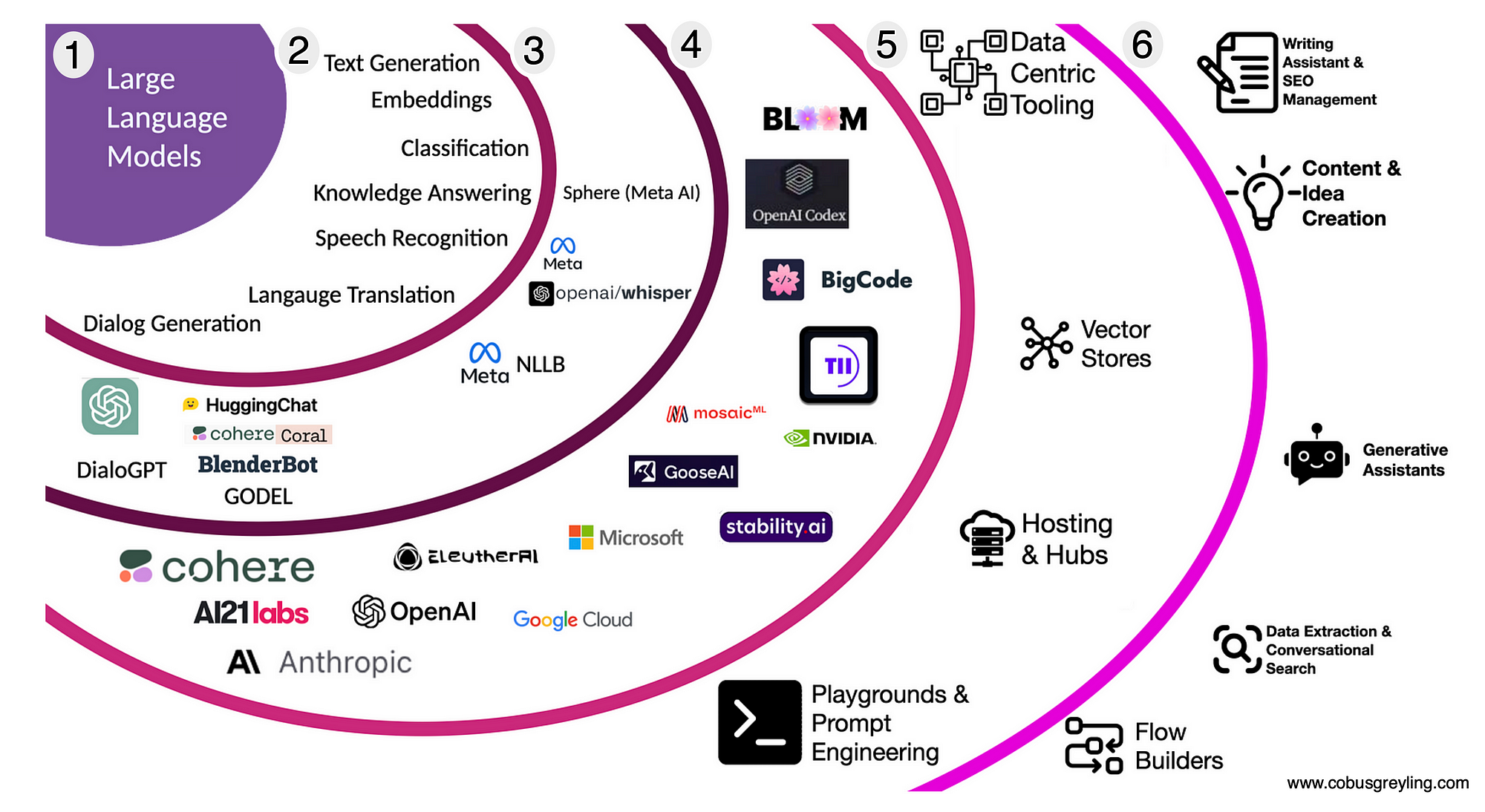Scale & Strategy
this is Scale & Strategy, and the photo below shows how we prepared for today's newsletter
(hahahahahhahahah we love this guy) Ok, let's get serious now.
here's what we have for you:
- The LLM Landscape: Choosing the Right Model for the Job
- Deep Research is Now Open to Everyone
- Google Ads Costs Are Rising—Here’s How to Stay Ahead
The LLM Landscape: Choosing the Right Model for the Job
With so many large language models (LLMs) out there, figuring out which one to use can feel overwhelming—especially if you’re not deep into AI. But once you understand their strengths and trade-offs, picking the right tool becomes much easier.
Here’s a breakdown of the models HubSpot’s team has tested, what they do best, and where they fall short:
ChatGPT & OpenAI-o1: The Logic Expert
OpenAI’s o1 model is making waves for its reasoning abilities. It’s designed for structured thinking and step-by-step problem-solving while still delivering the creative flexibility ChatGPT is known for.
✅ Great for task-specific assistants and custom setups
✅ Outperforms GPT-4 on logic-heavy prompts
❌ Overkill for simple tasks
Best for: Coding, editing complex content, or anything requiring strict instruction-following.
GPT-4o: Fast, Free, and Multimodal
OpenAI’s GPT-4o builds on GPT-4’s strengths with faster responses and a seamless blend of text, image, and voice capabilities. Plus, free-tier users can access it (with limits).
✅ Handles text, images, and audio simultaneously
✅ Quick, efficient responses—even for complex queries
❌ Free-tier limits run out quickly
Best for: Quick answers, multimodal tasks (e.g., analyzing screenshots, responding to voice input).
Claude (Anthropic): The Summarization Pro
If you need to condense long documents into something digestible, Claude delivers. It’s great at structuring information, and Anthropic’s Projects tool helps with recurring tasks.
✅ Strong document summarization
✅ Easy setup for repeat jobs
❌ Struggles with very large files
Best for: Turning 60 pages of notes into something readable.
Google Gemini: The Context King
With a massive context window, Gemini can process entire books while keeping track of details. Its Notebook LM even converts documents into podcast-style audio.
✅ Handles long-form content with ease
✅ Can generate audio summaries
❌ Customization is still somewhat limited
Best for: Processing large volumes of information or listening to summaries on the go.
Llama (Meta): The Privacy Champion
Llama isn’t the most advanced model, but it’s fully offline—keeping your data private. The trade-off? It’s more complex to set up and lacks cloud-based refinements.
✅ Open-source and highly customizable
✅ Keeps data local—no external sharing
❌ Not ideal for complex problem-solving
Best for: When privacy matters more than polish.
Grok (xAI): The Social Media Specialist
Grok is built for real-time social insights, with access to X (Twitter) data and an impressive image generator, Flux One.
✅ Pulls trending X data
✅ Generates high-quality images
❌ Falls short on general tasks
Best for: Social media research or quickly creating visuals.
Perplexity: The Research Workhorse
Technically not an LLM—Perplexity acts as an AI-powered research assistant, combining web search with summarization using models like GPT-4 or Claude.
✅ Lets you choose the AI model powering your results
✅ Blends search with concise summaries
❌ Can pull outdated or inaccurate info
Best for: Research, writing, and putting together presentations.
You don’t need to pick just one model—each has its place depending on the task.
Whether you’re editing copy, summarizing reports, analyzing social trends, or just need a quick answer, there’s a tool built for it.
Getting the most out of AI isn’t about finding the "best" model—it’s about knowing which one fits your workflow.
Deep Research is Now Open to Everyone
Deep Research helps you uncover in-depth insights on complex topics, making it perfect for tackling broad subjects without endless tab-hopping.
Interested? Molly McHugh-Johnson shares how to get the most out of it.
1) Decide if you actually need it
Deep Research is built for detailed, comprehensive reports. If you just need a quick definition or surface-level answer, a regular search will do the job.
2) Start with simple, direct questions
No need to overcomplicate your prompts. Clearly state your goal, and Gemini will take it from there. The more straightforward your request, the better the results.
3) Ask follow-up questions
Once you have the first round of insights, dig deeper. Ask for cost breakdowns, historical context, or explanations on specific points—it’s designed to refine and expand on your queries.
4) Explore the research sources
You can track how Gemini gathers information by selecting “Show thinking” and checking the “Sites browsed” section. If something catches your eye, click through to explore the source directly.
5) Use it for local searches
Deep Research isn’t just for global trends—it works well for hyper-local topics too. Use it to find businesses, events, or community insights, with an emphasis on local sources.
6) Listen or export your report
Once your report is ready, you can generate an audio overview for a podcast-style summary. You can also download or share the report for later reference.
That’s it—no AI expertise required. Once you get the hang of it, Deep Research can easily become part of your workflow.
Have a unique way you’re using it? Let us know—we’d love to hear about it!
Google Ads Costs Are Rising—Here’s How to Stay Ahead
Higher competition, stricter privacy rules, and AI-driven bidding strategies are pushing Google Ads costs higher than ever.
Between 2023 and 2024, cost per lead jumped 25%—and 2025 isn’t looking any better.
So, how do you keep costs under control? Guy Philosoph shares a few key strategies:
1) Leverage First-Party Data
With privacy restrictions tightening, owning your data is more important than ever. Start by:
- Growing your email list with consistent, high-value newsletters.
- Offering lead magnets to encourage data sharing in exchange for exclusive content or tools.
- Using lead management tools to follow up, gather deeper insights, and refine audience targeting.
2) Improve Lead Qualification & Follow-Up
A low conversion rate might mean your lead qualification process needs a tune-up.
- Develop buyer personas beyond basic demographics—include psychographics, industry knowledge, and tech sophistication.
- Automate follow-ups to keep leads engaged.
- Use lead scoring to prioritize high-value prospects (which you’re probably doing already, right?).
3) Use AI Where It Matters
AI can be a game-changer—when used correctly. Focus on:
- Optimizing landing pages and ad creatives.
- Automating bidding strategies to save time and reduce wasted spend.
- Running Performance Max campaigns to maximize ad reach.
4) Sharpen Your Keyword Strategy
Don’t just stick with what you’ve been using—continuously audit performance and look for gaps. Competitor keyword research tools can help identify areas where you can compete more effectively.
5) Go Beyond Google Ads
A diversified marketing mix keeps your funnel strong. Pair Google Ads with:
- Content marketing and SEO for long-term organic growth.
- Inbound and outbound strategies to reach different audience segments.
- CRM-driven campaigns like email and SMS for nurturing and retention.
- Loyalty programs to increase lifetime customer value.
Yes, Google Ads costs are climbing. And yes, you’ve probably heard some of these tactics before.
But the brands that execute them well will stretch their budgets further—and win.
Was this email forwarded to you?
That’s it for today and as always It would mean the world to us if you help us grow and share this newsletter with other operators.
Our mission is to help as many business operators as possible, and we would love for you to help us with that mission!



